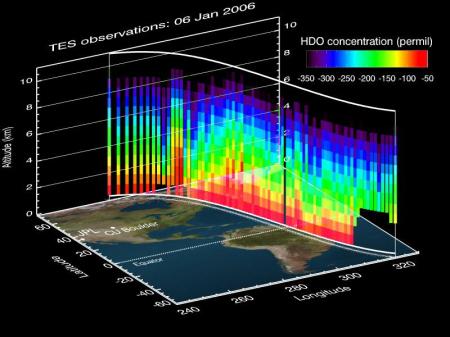Every so I often I learn something so simple and shocking that I find myself asking:
“How can I possibly not have known that already?“.
Eggs

Eggs
While listening to Farming Today the other morning, learned that:
“Large eggs come from old hens“
In order to produce large eggs – the most popular size with consumers – farmers need to allow hens to reach three years old.
So during the first and second years of their lives they will first lay small eggs, then medium eggs, and finally large eggs.
On Farming Today a farmer was explaining that egg production naturally resulted a range of egg sizes, and it was a challenge to find a market for small eggs. Then came the second bomb’shell’.
“The yolk is roughly same size in all eggs“
What varies between small and large eggs is mainly the amount of egg white (albumen).
How could I have reached the age of 58 and not known that? Or not have even been curious about it?
Since learning this I have become a fan of small eggs: more yolk, less calories, more taste!
But my deep ignorance extends beyond everyday life and into the professional realm. And even my status as ‘an expert’ cannot help me.
Weather Forecasts & Weather Stations
Professionally I have become interested in weather stations and their role in both Numerical Weather Prediction (NWP, or just weather forecasting) and in Climate Studies.
And as I went about my work I had imagined that data from weather stations were used as inputs to NWP algorithms that forecast the weather.
But in September I attended CIMO TECO-2018 (Technical Conference on Meteorological and Environmental Instruments and Methods of Observation) in Amsterdam.
And there I learned in passing from an actual expert, that I had completely misunderstood their role.
Weather station data is not considered in the best weather forecasts.
And, on a moment’s reflection, it was completely obvious why.
Weather forecasting work like this:
- First one gathers as much data as possible about the state of the atmosphere ‘now’. The key inputs to this are atmospheric ‘soundings’:
- Balloon-borne ‘sondes’ fly upwards through the atmosphere sending back data on temperature, humidity and wind (speed and direction) versus height.
- Satellites using infrared and microwave sensors probe downwards to work out the temperature and humidity at all points in the atmosphere in a swathe below the satellite’s orbit.
- The NWP algorithms accept this vast amount of data about the state of the atmosphere, and then use basic physics to predict how the state of the entire atmosphere will evolve over the coming hours and days
And then, after working out the state of the entire atmosphere, the expected weather at ground level is extracted.

Visualisation of the amount of moisture distributed across different heights in the atmosphere based on a single pass of a ‘microwave sounding’ satellite. The data gathered at ground level is just a tiny fraction of the data input to NWP models. Image credit: NASA/JPL-Caltech
Ground-based weather stations are still important:
- They are used to check the outputs of the NWP algorithms.
- But they are not used as inputs to the NWP algorithms.
So why did I not realise this ‘obvious’ fact earlier? I think it was because amongst the meteorologists and climate scientists with whom I spoke, it was so obvious as to not require any explanation.
Life goes on
So I have reached the age of 58 without knowing about hen’s eggs and the role of weather stations in weather forecasting?
I don’t know how it happened. But it did. And I suspect that many people have similar areas of ignorance, even regarding aspects of life with which we are totally familiar – such as eggs – or where one is nominally an expert.
And so life goes on. Anyway…
This pleasing Met Office video shows the importance of understanding the three-dimensional state of the atmosphere…
And here is a video of some hens…
November 26, 2018 at 11:17 am |
Eggs – I knew that – & I avoid the large ones!
Weather input I did not know that – but don’t beat yourself up – there is so MUCH of interest in the world, we will keep learning until we are incapable or pop our clogs! 🙂
November 26, 2018 at 9:33 pm |
I’ve not listened to the broadcast but many of the things you’ve written about eggs aren’t true. Hens can and do lay a variety of sizes of egg from when they first reach POL. I believe that early on they are more random and later settle down but there is definitely no gradual transition from all small to large eggs. I suspect that that farmer also has the distinct advantage of being allowed to sell eggs as “S”, “M”, “L”, “XL”, “Free Range”, etc if he wishes to do so (small scale producers don’t) or as mixed. I’ve put an up-to-date histogram of egg sizes from my chickens on my facebook if you want to see the kind of thing a set of young hens can produce.
Also on the weather forecasting front I suspect the problem with using ground station data as an input may be something to do with combining datasets that contain a small number of points at low uncertainty with datasets that contain a large number of points at high uncertainty. It is difficult to stop algorithms effectively overfitting to the low uncertainty points and whipping around in an unphysical manner inbetween.
December 3, 2018 at 10:33 am |
James
Thank you for that. I would love to see the histogram. Is it available outside of Facebook?
Michael
December 3, 2018 at 10:09 pm
Sent to your NPL email address. You are welcome to post it here if you so wish.